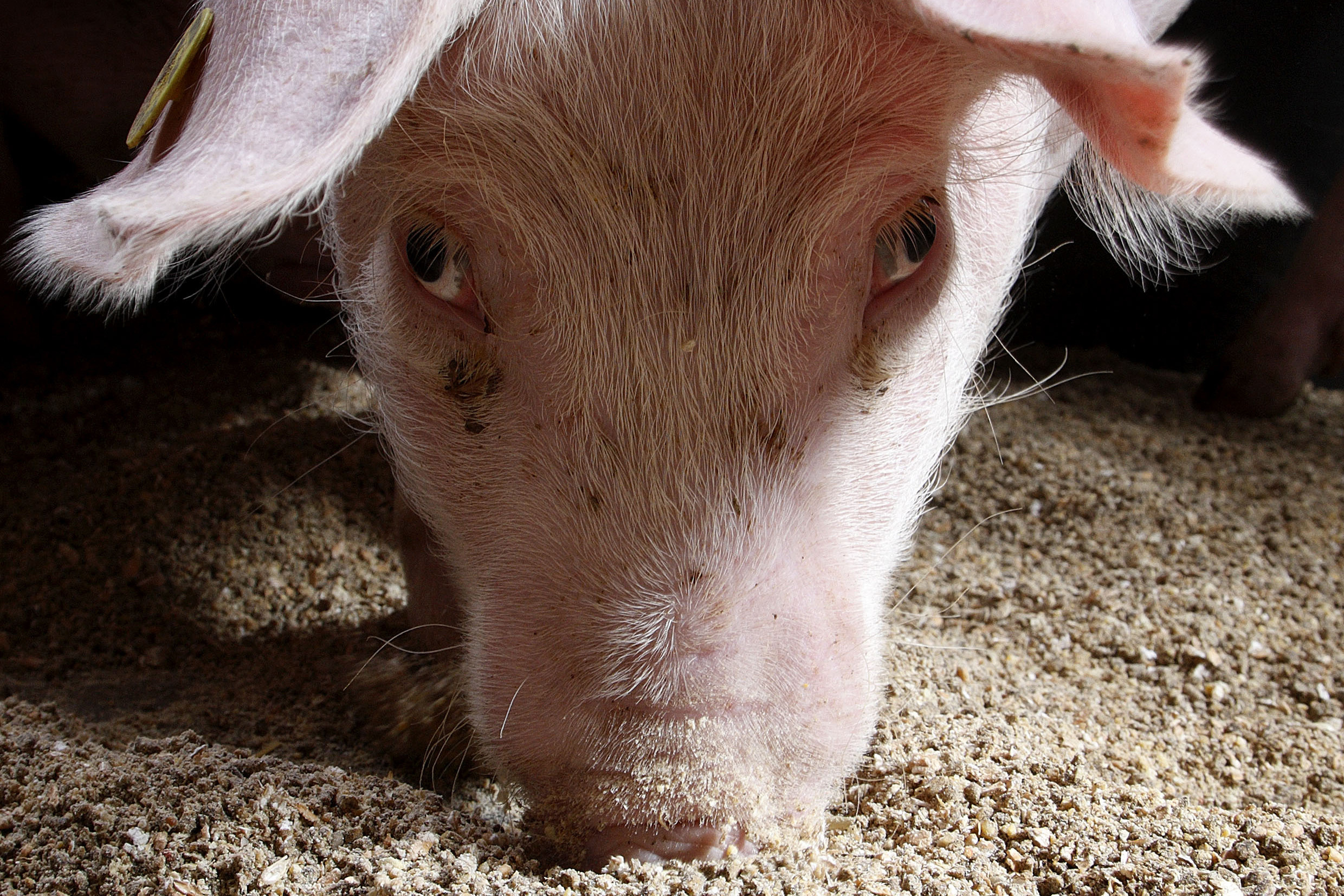Impact of mycotoxin contamination in swine

Many factors are involved in finding a complete solution to avoid the negative consequences of mycotoxins on a swine herd. Quality control, data management and zootechnical expertise are key.
Aflatoxins, ochratoxins, fumonisins, zearalenones and trichothecenes (DON, T2, H-T2, etc.) are the five main identified mycotoxins families that cause many zootechnical issues with or without any clinical effects. Wisium globally studies mycotoxin contamination thanks to its worldwide analysis database. The global trend observed over the last years, is an increase in contamination levels in a multi-contamination context. To expand further, the company has invested years-worth of research and development (R&D) and data management in collaboration with its 12 affiliates worldwide and 11 R&D centres in order to consolidate data and precisely advise their customers on mycotoxin contamination risks.
Effect of mycotoxins in swine
Regarding swine production, the company realised more than 1,150 mycotoxins HPLC analyses of swine complete feed in 2017. Swine complete feed was mainly contaminated by three mycotoxins families: trichothecens (mainly deoxynivalenol – DON), fumonisins and zearalenones. DON mycotoxins are the main identified concern, present in 100% of the samples, see Table 1.
DON contamination in swine is associated with digestive troubles including feed refusal, vomiting and lesions of the gastrointestinal tract, and with zootechnical problems such as a proven decrease of average daily gain. Alteration of immune response has also been observed. Average daily gain can be downgraded by Fumonisin B1, and the consumption of this mycotoxin by gestating sows has resulted in considerable damage to foetuses in utero. Zearalenone is also well known for its impact on reproduction parameters, especially in sows. Growing pigs can suffer from sexual development disease too, and boar semen can be downgraded.
The presence of two or more different mycotoxins in a sample does not mean that their effects will be just additional. Synergies can be developed increasing the negative effect on the animal. Scientific literature and feedback from the field have highlighted a regular association of DON and zearalenone. This association can lead to decreases in average daily gain and feed consumption, as well as to an important decrease in immune response.
Complete solution against mycotoxins
To avoid the negative impact of mycotoxins on performances, the investigation starts with raw materials and ends with the animal.
- The first key success factor of the mycotoxins analysis is to sample the right raw material at the right time to have a comprehensive understanding of the global contamination, through a precise and specific quality control plan. This process implementation requires specific knowledge taking into account the reality of each feed plant.
- The second is the sampling method in order to collect representative samples for a batch. A good sample of 1 kg can reflect the contamination present in many tonnes.
- The third key point is to have the right analytical solution, using quick and complete chemical analyses.
For that, the approach includes a dedicated technical support advising and training on how and when to collect representative samples as well as a large analysis spectrum of 48 mycotoxins. By developing specific decision-making tools, Wisium offers its customers the possibility to precisely monitor the use of product function of the contamination. More than using scales, this new generation of monitoring tools is working with formulation equations.
Acting in synergy with animals
The full package of services including quality control plan, sampling methodology, quick analysis, technical support and monitoring tool is combined with a high end technical product. Much more than a toxin binder, T5X acts in synergy with animals on three main points of action:
- Binding to capture polar toxins
- Detoxification enzymes production enhancement
- Metabolic system enhancement.
Thanks to this international R&D network including research centres, the performance of the product has been proved on field in many production contexts. Even in a high DON challenging context, at 2,000 ppb improvements in swine growth performances with the toxin binder can be seen.
Figure 1 – Toxin binder* effect on swine growth performance (DON contamination – The Netherlands).

The trial in Figure 1 was realised on a population of 72 piglets, during the six weeks following weaning. In this case the use of T5X has increased bodyweight by 2.8%, average daily gain by 7.0% and feed efficiency (by decreasing the Feed Conversion Ratio by 5.5%). In this challenging and crucial period of post-weaning, using the product compensates for poor growth induced by mycotoxins and improved the European efficiency factor by 13.2%, compared to positive control group.











